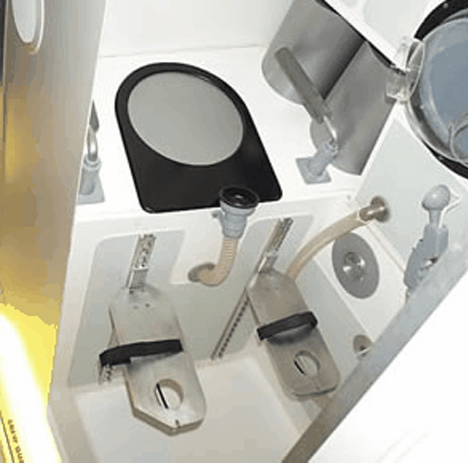INTERNATIONAL SPACE STATION - Some Interesting facts
What so astronauts do on a space station?
A space station is a working laboratory and home for astronauts, which permanently orbits Earth. Astronauts stay for weeks or months at a time and spend their days carrying out scientific investigations, such as the effect of space on the human body and growing plants. They also maintain the station.
Day in the life of an Astronaut:
- Eats breakfast and do housekeeping tasks.
- take blood sample for analysis and check day's schedule with Mission Control
- Do air quality check and start work on allotted experiment
- Exercise for two hours followed by lunch
- Break, then maintenance and experiment work
- Another hour of exercise
- Finish work tasks, clean up experiments, and check the station's system
- Evening meal and conference to plan the next day
How to build a space station?
- Get space scientists from across the world to design the station, then plan and build its different parts.
- Launch the first module - a unit for astronauts to live in. Parts can be transported by Russian rocket or American space shuttle.
- Take up more and more parts, one at a time, and assemble them in space.
- Send out astronauts, secured to the robotic arm, to attach framework and other parts to the ISS.
- Add laboratory modules, where the astronauts can work, and solar panels to power the station.
- Once the station is complete you'll need to service it regularly to keep things working smoothly.
Space Stations:
- 1971- Launch of the first space station, the Russian Salyut 1. Six more Salyuts follow, with Salyut 7 in orbit until 1991.
- 1973- America's first space station, Skylab, is launched.
- 1986- The construction in space of Russian space station Mir begins. Russian cosmonaut Valeri Poliakov lived aboard Mir for a record breaking 437.7 days between January 1994 and March 1995.
- 1998- The first part of the International Space Station (ISS) is launched.

International Space Station (ISS):
- On 2 November 2000, the first crew moved into the ISS and stayed 138 days.
- There has been a crew on board ever since - most stay for about six months.
- There is a crew of three, bt this will increase to six as the station grow,.
- The ISS is 108.5 m (356 ft) by 72.8 m (239 ft) - about the size of a football pitch.
- The station orbits Earth at 28,000 kph (17,500 mph).
- The ISS orbits Earth more than 15 times a day, and so regularly passes over where you live at a height of about 390 km (240 miles).
- Astronauts aboard the space station witness sunrise about every 90 minutes as the craft orbits Earth, moving between the sunny and dark sides of the planet.
- There are 16 countries collaborating on the ISS: 11 European Space Agency countries, USA Russia, Canada, Japan and Brazil.
- There are nearly 18 major components joined to make up the ISS.
- The space station is kept in orbit by boosts from visiting craft. Without boosts, the ISS loses about 90 m (300 ft) in altitude each day.
- If abandoned, initially the station would continue to orbit, though its altitude would decrease and eventually, it would tumble to Earth, but most of it would break up and burn in the atmosphere.

The smallest room:
- For the first ten years there was only one toilet on the ISS, in the Russian-built Zvezda module.
- In May 2008 the toilet broke and a new pump had to be rushed from Russia to America, then delivered by space shuttle. This took two long weeks. While the toilet was out of action the crew used facilities in the Soyuz transport capsule.
- A second toilet, costing US $ 9 million, was installed in the American side of the ISS in November 2008. It is considered as the most expensive toilet in the Universe.
- Leg and thigh restraints keep the astronaut in position as fans suck waste away. Urine is collected through hoses attached to personalized funnels.







